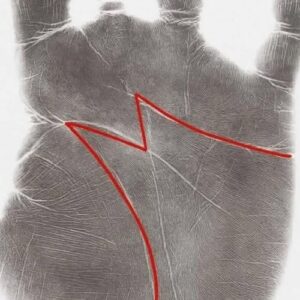Art has a remarkable ability to capture the imagination. It can turn an ordinary day into an extraordinary encounter, simply by presenting us with something unexpected. A single sculpture, painting, or installation can stir curiosity, spark debate, and even change how we see the world around us. Sometimes, the power of art doesn’t lie in grand exhibitions or famous museum halls—it lies in an overlooked corner of an antique shop, waiting for someone to notice.
That is exactly the story of a peculiar piece that locals have come to call The Bundle. For over five years, it has sat quietly in the window of a small antique store, its form wrapped and bound, its meaning elusive. With a price tag of $10,000, the sculpture has been both admired and avoided, drawing in passersby who pause to stare, only to walk away shaking their heads.
Why has this striking creation remained unsold for so long? Is it the cost, the mysterious aura it exudes, or perhaps something deeper? To answer that, we must first understand its origins, its design, and the curiosity it continues to ignite.
The Birth of The Bundle
The Bundle is credited to Janusz Walentynowicz, a Danish artist known for blending minimalism with symbolic depth. His works often center on themes of containment, unity, and the unseen connections between objects and ideas. Rather than crafting intricate or overtly decorative pieces, Walentynowicz chooses simplicity—yet his simplicity is layered with meaning.
At first glance, The Bundle might appear to be a collection of objects or materials tightly bound together. There is no ornate carving, no splash of color, and no obvious subject matter. But the lack of detail is intentional. In Walentynowicz’s philosophy, art should invite personal interpretation. The more the artist leaves unsaid, the more room there is for the viewer to enter the piece with their own perspective.
Some see peace in the sculpture’s form—the gentle curve of the wrapping, the smoothness of its lines, and the stillness it suggests. Others perceive tension—the tight binding feels restrictive, as if holding back something that longs to break free. This duality is part of its allure.
Minimalism with a Mystery
Minimalist art often divides opinion. For some, the clean lines and sparse details create a meditative effect. For others, minimalism feels incomplete, as though the artist has withheld something essential. The Bundle embodies both sides of this debate. Its shape is clear, but its purpose is open-ended. Is it a metaphor for unity—objects or ideas held together by invisible bonds? Or is it a statement on control—how freedom can be constrained by outside forces?
The beauty of The Bundle is that it doesn’t answer these questions for you. It asks you to engage, to wonder, and perhaps to project your own experiences onto it. That alone could explain why so many people pause to look at it, even if they don’t take it home.
The Unexpected Detail
The sculpture displayed in this particular antique store, however, contains an unusual feature not present in most documented versions of The Bundle: a carefully sculpted human foot partially intertwined with the wrapped form.
This detail changes everything.
In art, the addition of a single element can shift the meaning of the whole piece. The foot introduces a distinctly human presence into what was otherwise an abstract form. Suddenly, the sculpture may evoke themes of human struggle, entrapment, or even resilience. It could be read as a commentary on how people are bound by society’s expectations, or as a symbol of endurance—how we persist even when constrained.
Of course, the inclusion of this detail also raises questions about authenticity. Is this truly a rare variation created by Walentynowicz himself, or could it be a reinterpretation by another artist inspired by his original work? And if so, does that make it less valuable—or perhaps more so, due to its uniqueness?
Authenticity and the Art Market
The art world has long grappled with questions of authenticity. A piece attributed to a well-known artist can command staggering prices, but if doubts about its origin arise, its value can plummet. In some cases, uncertainty can even make a piece more intriguing to certain collectors who value the story as much as the object itself.
The antique store’s Bundle sits right in this gray area. For purists, the foot might suggest that the piece is not an original Walentynowicz, and thus not worth the asking price. For others, the modification—or potential variant—adds a layer of rarity that makes it even more desirable.
Regardless of its market classification, one thing is certain: the mystery surrounding the sculpture has become part of its identity. It is no longer just a piece of art; it is a conversation starter, a puzzle, and an enduring local curiosity.
Why Hasn’t It Sold?
When something is priced at $10,000 and remains unsold for over five years, people naturally wonder why. There are several possible reasons:
Price vs. Perceived Value – Art pricing is as much about perception as it is about materials or effort. A collector who deeply connects with the piece may see $10,000 as reasonable, while a casual buyer might see it as far too high.
Niche Appeal – Minimalist sculptures can have limited audiences compared to more decorative or traditional art. Not everyone wants to bring home a piece that asks questions but provides no clear answers.
Mystery Can Be Intimidating – While some people are drawn to ambiguity, others are put off by it. The human foot detail adds further complexity, which may intrigue seasoned art lovers but confuse casual viewers.
Location Matters – The sculpture resides in a small antique store, not a high-profile gallery. Its exposure to the right kind of buyers may simply be too limited.
The Role of Story in Art
Interestingly, the very factors that might be keeping The Bundle from selling are also what make it unforgettable. The story behind the sculpture—its origin, its unusual detail, its long stay in the shop window—has turned it into a local legend. Residents point it out to visitors. Online discussions speculate about its meaning. Even those who have no intention of buying it seem invested in its fate.
This reflects a fundamental truth about art: value is not just determined by the work itself, but by the stories and emotions surrounding it. A painting might be technically flawless, yet forgotten without a compelling narrative. Conversely, a mysterious object with an uncertain history can remain in the public eye for decades.
The Power of Personal Interpretation
What makes The Bundle so enduring is that it leaves interpretation entirely up to the viewer. To one person, it may symbolize unity and togetherness. To another, it might represent suppression or hidden truths. The human foot could be seen as a sign of humanity’s presence in all struggles—or as a reminder that we can never fully separate ourselves from the constraints of life.
This openness means that no two conversations about the sculpture are ever the same. Every person brings their own experiences, beliefs, and imagination to the piece. And in a world where many artworks are explained in exhaustive detail by critics, there is something refreshing about a piece that resists easy categorization.
Will The Bundle Ever Find a Buyer?
Only time will tell whether someone will eventually see The Bundle not just as an intriguing display piece but as a worthy investment. Perhaps a collector who values mystery over certainty will make the purchase. Or maybe a museum will acquire it for its cultural and conversation-starting value.
Until then, it remains in its place—patient, silent, and strangely powerful. The sun sets and rises, the seasons change, and still The Bundle waits. It is an unsold sculpture, yes, but also a statement: that art’s purpose is not always to be owned, but to be experienced.
A Lesson Beyond the Sculpture
Whether you are an artist, a collector, or simply someone who appreciates beauty, The Bundle offers a reminder: true art is not about immediate answers. It is about the space it creates in your mind, the questions it prompts, and the emotions it stirs.
In that sense, perhaps the antique store owner doesn’t mind that it hasn’t sold. After all, its presence draws people in, makes them stop and think, and sparks conversations they might never have had otherwise. And that, in itself, could be worth far more than $10,000.
In the end, The Bundle is not just a sculpture—it’s a living dialogue between artist and audience, between mystery and meaning, between the seen and the unseen. And for as long as it remains in that little shop window, it will continue to do what art does best: challenge, inspire, and invite us to see the world just a little differently.





